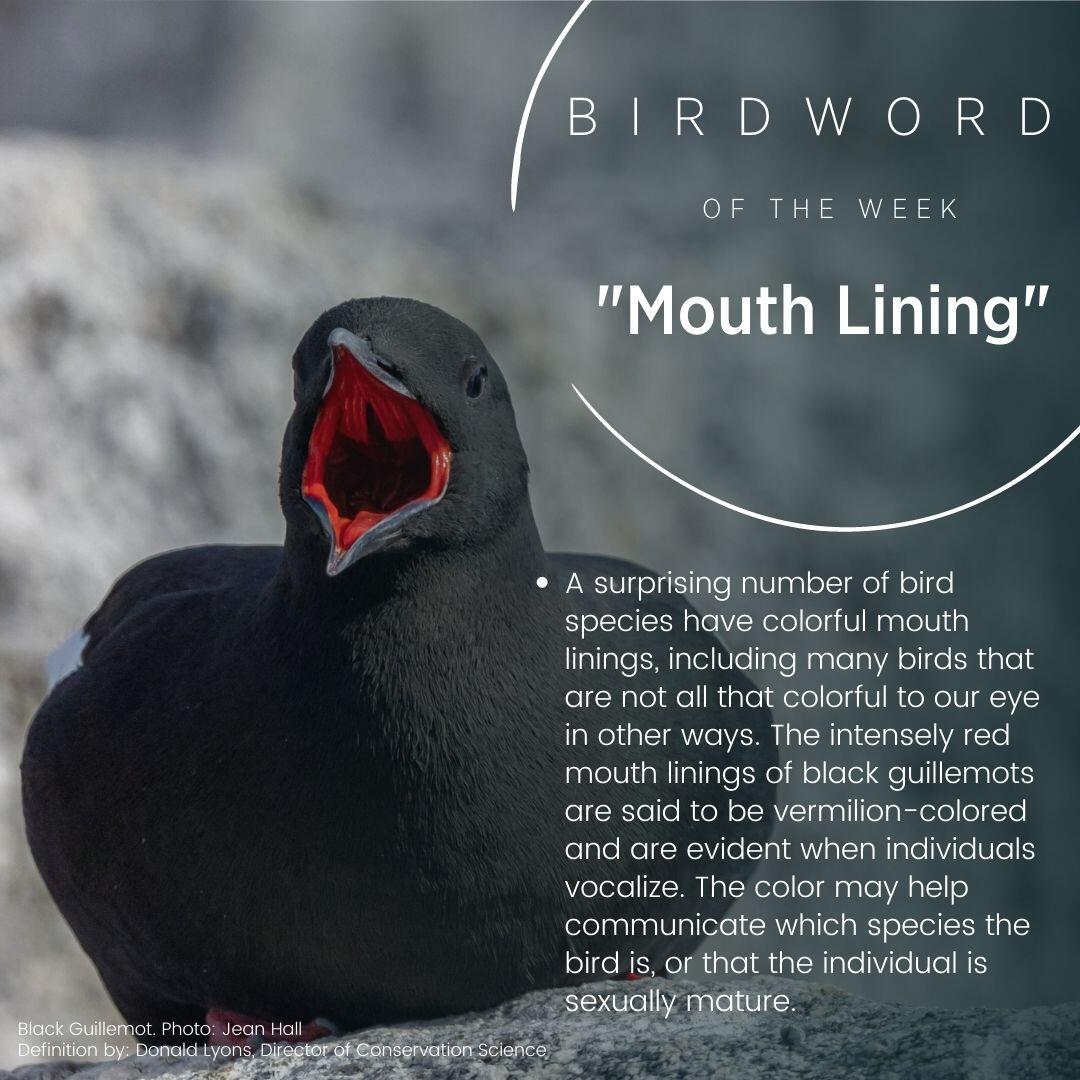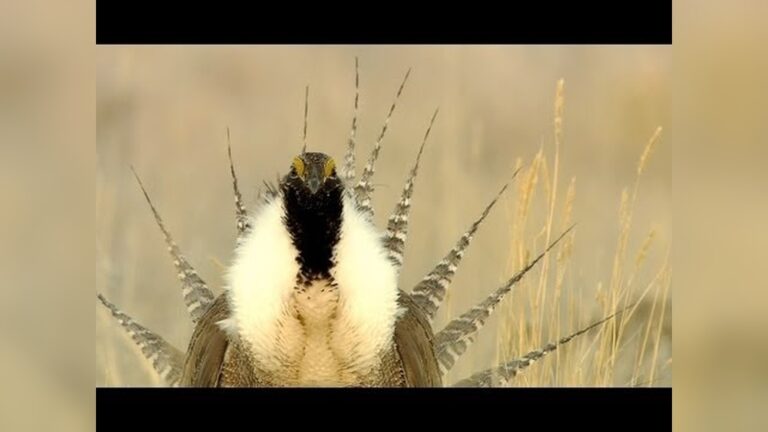How Do Birds Vocalize Scientific Explanation
Have you ever wondered how birds create those beautiful songs and calls that fill the air? It might seem like magic, but there’s a fascinating science behind every chirp and tweet.
Understanding how birds vocalize can change the way you listen to nature and deepen your connection with the world around you. You’ll discover the surprising way birds use their bodies to produce sounds and the secrets hidden in their songs.
Get ready to unlock the mystery behind their voices and see birdsong in a whole new light.

Credit: seabirdinstitute.audubon.org
Bird Vocal Anatomy
Birds produce sounds using a unique part of their body called the syrinx. It is located where the windpipe splits into the lungs. The syrinx allows birds to create many different sounds, from simple chirps to complex songs.
The structure of the syrinx and the bird’s breathing system work together to control these sounds. Understanding these parts helps explain how birds vocalize so clearly and loudly.
Syrinx Structure
The syrinx is a small, flexible organ made of cartilage and muscles. It sits at the base of the bird’s trachea. This position lets birds use both lungs to produce sound at the same time.
Birds can move the muscles around the syrinx to change pitch and tone. This control allows them to sing multiple notes quickly. The syrinx is more complex than the human voice box, giving birds a wide range of sounds.
Respiratory System Role
Birds have a powerful respiratory system that supports their vocal skills. Air flows from the lungs through the syrinx to create sound. Birds push air out in a steady stream, which helps maintain clear notes.
The muscles around the syrinx adjust the tension on membranes inside. This change alters the sound’s frequency. Birds can breathe and sing at the same time because their lungs and air sacs work efficiently together.

Credit: www.cell.com
Sound Production Process
Birds produce sounds using a unique organ called the syrinx. It sits where the windpipe splits into the lungs. This organ works differently from the human voice box. The sound production process in birds involves careful control of airflow and muscles. These work together to create various tones and pitches. Understanding this process helps explain how birds sing so clearly and loudly.
Airflow And Muscle Control
Birds push air from their lungs through the syrinx. Muscles around the syrinx tighten or relax to change sound. This muscle control adjusts the tension of membranes inside. Airflow causes these membranes to vibrate, producing sound waves. The stronger the airflow, the louder the sound. Fine muscle control allows birds to make complex songs and calls.
Frequency And Pitch Variation
The pitch depends on how fast the membranes vibrate. Faster vibrations create higher pitches, slower ones make lower sounds. Birds change pitch by altering muscle tension and airflow speed. This ability lets birds express emotions or communicate different messages. Some birds can even sing two notes at once by using both sides of the syrinx. This variation adds richness and beauty to their songs.
Types Of Bird Calls
Birds produce many types of sounds to communicate with each other. These sounds fall into two main groups: songs and calls. Each type has a special role in bird life. Understanding these types helps us know more about how birds live and interact.
Bird calls vary widely among species. Some are short and simple. Others are long and complex. These sounds help birds find mates, warn of danger, or mark their territory.
Songs Vs. Calls
Bird songs are usually longer and more musical. Males often sing to attract females or defend their space. Songs are mostly heard during the breeding season. They show off the bird’s health and strength.
Calls are shorter sounds. Both male and female birds use calls. Calls serve many purposes, like signaling danger or keeping in touch with family. They happen all year and in many situations.
Communication Functions
Bird sounds carry important messages. Some calls warn others about predators nearby. Others help birds stay together in a flock. Calls also help parents find their chicks.
Songs mainly focus on mating and territory. A strong song can scare away rivals. It can also attract a mate. Songs and calls together create a rich language for birds.
Neurological Control
Birds create sounds through a complex neurological system. Their brain controls how they sing and call. This system helps them communicate, attract mates, and mark territory. Understanding this control reveals how birds produce varied and clear vocalizations.
Brain Regions Involved
Several key brain areas guide bird song. The HVC (high vocal center) sends signals to other parts. The RA (robust nucleus of the arcopallium) controls muscles for sound production. The brainstem manages breathing and timing. These regions work together to produce songs.
Each part plays a unique role. The HVC starts the song pattern. The RA shapes the sound’s tone. The brainstem keeps rhythm steady. This teamwork allows birds to sing complex songs clearly.
Learning And Imitation
Young birds learn songs by listening to adults. Their brains have special areas for learning sounds. They practice by imitating sounds they hear. This process is like human speech learning.
The brain changes as the bird learns. Neurons grow and connect to improve song skills. This learning phase is critical for good singing. Without practice, birds cannot develop proper songs.
Environmental Influences
Bird vocalizations do not happen in a vacuum. The environment plays a big role in shaping how birds sing and call. Different factors like where they live and the time of year affect their sounds. These environmental influences help birds communicate better in their surroundings.
Habitat Impact
Birds living in dense forests often sing lower and slower. Thick trees and leaves block high-pitched sounds. Birds in open fields use louder and clearer calls. These sounds travel farther with less noise. Water birds may use calls that carry over water. Each habitat shapes how birds use their voice.
Seasonal Changes
Bird songs change with the seasons. During breeding season, males sing more to attract mates. In colder months, birds may sing less to save energy. Migration also affects bird calls. Some birds use special calls to stay in touch during long flights. The seasons guide when and how birds vocalize.

Credit: www.sciencedirect.com
How Smart Pets Lover Can Help You with How Do Birds Vocalize Scientific Explanation
Exploring Bird Vocalization Through Hands-On Learning
Understanding how birds vocalize, from the intricate anatomy of their syrinx to the neurological control behind their songs, opens up exciting ways to connect with these feathered friends. For those eager to deepen their appreciation, observing local bird calls in different environments can reveal how surroundings influence their sounds. Try keeping a simple audio journal during walks—note the variety of calls and when they occur. This practice not only sharpens your ear but also ties directly to the scientific aspects of sound production and environmental factors discussed earlier.
Bird enthusiasts might also consider partnering with local wildlife groups or online communities where sharing observations helps build a richer understanding of bird communication. Remember, nurturing this curiosity aligns perfectly with what we value at Smart Pets Lover: fostering confident, informed pet parents who cherish every chirp as part of their pet’s unique story. For additional guidance or questions, feel free to reach out to expert forums or ornithological societies—learning is a joyful journey when shared.
Frequently Asked Questions
How Do Birds Produce Different Sounds?
Birds produce sounds using the syrinx, located at their windpipe base. Muscle control adjusts pitch and tone precisely. This unique organ allows birds to create diverse vocalizations for communication and mating.
What Role Does The Syrinx Play In Bird Vocalization?
The syrinx is the main vocal organ in birds. It enables sound production by vibrating membranes as air passes through. Muscle movements in the syrinx control pitch and volume, making bird songs complex and varied.
Why Do Birds Sing Different Songs?
Birds sing different songs to attract mates, defend territory, and communicate. Each species has unique calls shaped by evolution. Environmental factors also influence song variations within populations.
Can All Birds Mimic Sounds?
Not all birds can mimic sounds. Species like parrots and lyrebirds have advanced vocal learning abilities. They imitate other birds, animals, and even human noises for social interaction and survival.
Conclusion
Birds use their syrinx to create sounds. They control muscles to change pitch and tone. Each bird species has unique songs and calls. These sounds help them find mates and mark territory. Understanding bird vocalization reveals nature’s complexity. Next time you hear birds, remember their science.
Their songs tell stories without words. Nature’s music, simple yet fascinating.






